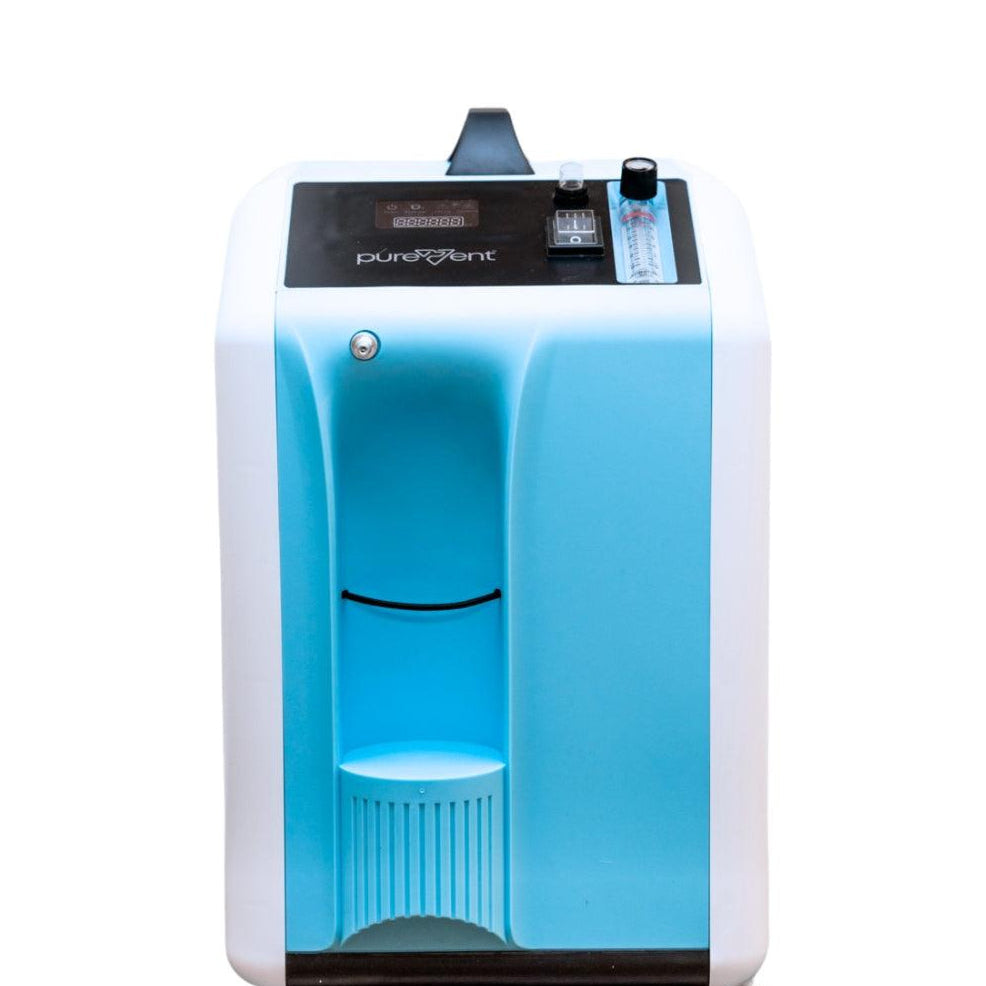Mitral valve disease (MVD) is one of the most common heart conditions affecting dogs, particularly as they age. This disease occurs when the mitral valve, which controls blood flow between the heart's left atrium and left ventricle, begins to deteriorate and leak. As a result, blood flows backward into the atrium, leading to a range of cardiovascular problems that can affect a dog’s overall health and quality of life.
MVD is especially prevalent in certain small to medium-sized breeds, such as Cavalier King Charles Spaniels, Dachshunds, and Miniature Poodles. While it can develop in any dog, older dogs are at a higher risk of developing the condition due to age-related wear and tear on the heart valve. Early diagnosis is crucial because, with proper management, many dogs can continue to lead a comfortable and active life despite their diagnosis. Recognizing the signs of MVD early on and working closely with a veterinarian can make a significant difference in managing the disease and ensuring your dog’s well-being.
Table of Contents
What is MVD in Dogs?
Mitral valve disease is a condition that affects the mitral valve, one of the four main valves in a dog’s heart. The mitral valve is located between the left atrium and the left ventricle, and its primary function is to ensure that blood flows smoothly from the atrium into the ventricle without any backflow. When the heart contracts, the mitral valve closes tightly to prevent blood from leaking backward into the atrium, ensuring that blood is pumped efficiently out of the heart and into the rest of the body.
In dogs with MVD, the mitral valve becomes thickened, irregular, or weakened, which prevents it from closing properly. As a result, blood leaks back into the left atrium when the heart contracts—a condition known as mitral valve regurgitation. This backflow forces the heart to work harder to maintain adequate blood circulation, and over time, the extra strain can lead to an enlarged heart and increased pressure on the lungs. If left untreated, MVD can progress to congestive heart failure, where the heart is no longer able to pump blood effectively to meet the body’s needs.

MVD in Dogs Versus Other Types of Heart Disease
While MVD is the most common heart disease in older, small to medium sized dogs, there are other types of heart conditions that can affect canines. Unlike MVD, which specifically involves the malfunction of the mitral valve, other heart diseases may affect the heart muscle (e.g., dilated cardiomyopathy), other heart valves, or the heart's ability to maintain a regular rhythm. Conditions like dilated cardiomyopathy primarily affect the heart muscle, causing it to become weak and enlarged, while aortic stenosis involves a narrowing of the heart’s aortic valve.
What makes MVD distinct is that it predominantly affects the structure and function of the mitral valve, leading to a unique set of symptoms and treatment approaches. Understanding this distinction helps in accurately diagnosing and managing the condition, ensuring that dogs with MVD receive appropriate care tailored to their specific needs.
Can mitral valve disease be cured in dogs?
No, mitral valve disease (MVD) cannot be cured in dogs. It is a chronic, progressive condition, meaning that once it develops, it tends to worsen over time. However, while a complete cure is not possible, MVD can be managed effectively with the right treatment and care.
How long can a dog live with mitral valve disease?
The life expectancy of a dog with mitral valve disease (MVD) can vary widely depending on several factors, including the stage at which the disease is diagnosed, the dog’s overall health, breed, and how well the condition is managed. With early diagnosis and appropriate treatment, many dogs can live for several years after being diagnosed with MVD.
Are there natural treatments that can help manage MVD symptoms?
Yes, there are some natural treatments and holistic approaches that can help manage symptoms of mitral valve disease in dogs. Natural and holistic treatments may include Omega-3 fatty acids, coQ10, taurine, specialized diet, and stress reduction techniques. While natural treatments can be beneficial for supporting heart health in dogs with MVD, they should always be used in conjunction with, and not as a substitute for, conventional veterinary care.
Causes and Risk Factors of MVD in Dogs
Mitral valve disease is primarily influenced by a combination of genetic, age-related, and lifestyle factors. Understanding these causes can help dog owners recognize which pets may be at higher risk for developing the condition.
The Role of Genetics
Genetics play a significant role in the development of MVD. Some breeds are more predisposed to this condition due to inherited traits that affect the structure and function of the mitral valve. Small to medium sized breeds, particularly Cavalier King Charles Spaniels, are well-known for their high risk of MVD, often developing the disease at a much younger age compared to other breeds. Other breeds frequently affected include Dachshunds, Miniature Poodles, Chihuahuas, and Shih Tzus. In these dogs, the condition tends to be hereditary, and responsible breeding practices are crucial in minimizing the prevalence of MVD within these breeds.
Age-Related Changes and Other Contributing Factors
While genetics is a key factor, MVD can also develop as part of the natural aging process. As dogs age, the mitral valve may thicken, stiffen, and lose its ability to function properly, leading to the onset of regurgitation. This process is more common in older dogs, making age a significant risk factor for the disease. Additionally, other health conditions such as chronic heart disease or infections that affect the heart can increase the likelihood of developing MVD. For example, a bacterial infection that affects the heart valves (endocarditis) can damage the mitral valve and lead to regurgitation.
The Role of Lifestyle and Environmental Factors
Although MVD in dogs is largely influenced by genetics and age, certain lifestyle and environmental factors can impact its progression. A sedentary lifestyle, poor diet, and obesity can put additional stress on a dog’s heart, exacerbating the symptoms of MVD. Maintaining a healthy weight and providing regular, moderate exercise can help manage the condition by reducing the workload on the heart. Additionally, regular veterinary check-ups can help detect early signs of MVD, especially in at-risk breeds, allowing for timely intervention and better management of the disease.
Symptoms of Mitral Valve Disease in Dogs
MVD in dogs can develop gradually, and the symptoms may not be immediately obvious in the early stages. Recognizing the signs early on is essential for timely diagnosis and treatment, which can help manage the condition and improve a dog’s quality of life.
Early Signs of MVD in Dogs
In the initial stages of MVD in dogs, the symptoms can be subtle and easy to miss. Pet owners should be on the lookout for:
- Coughing: A mild, persistent cough is one of the earliest signs of MVD. It may occur after exercise, during the night, or when the dog is lying down. This cough is caused by fluid accumulation in the lungs due to the heart’s inability to pump blood effectively.
- Exercise Intolerance: Dogs with early MVD may show reluctance to engage in physical activities they once enjoyed. They may tire more quickly, have less stamina, or appear out of breath after mild exertion.
- Mild Shortness of Breath: Some dogs may breathe more rapidly, especially after activity, as the heart starts to struggle with maintaining adequate blood circulation.
Progression of Symptoms as the Disease Advances
As MVD progresses, the symptoms become more pronounced, and the dog’s overall health may decline. Signs to watch for include:
- Breathing Difficulties: Dogs with advanced MVD may exhibit labored or rapid breathing, even while at rest. This is due to fluid build-up in the lungs (pulmonary edema) or the development of congestive heart failure.
- Lethargy and Weakness: Affected dogs may become increasingly lethargic, showing little interest in play or daily activities. They may seem weak or unsteady on their feet.
- Persistent Coughing and Gagging: The cough may worsen and become more frequent, often sounding harsh and unproductive. Some dogs may gag or appear to be choking.
- Distended Abdomen: In severe cases, fluid may accumulate in the abdomen (ascites), causing it to appear swollen. This symptom is often a sign of advanced heart failure.
- Fainting or Collapsing: As the disease advances, some dogs may experience episodes of fainting or collapse, especially after activity. This can happen when the heart is unable to maintain adequate blood flow to the brain.

When to Seek Veterinary Care
It’s important for pet owners to seek veterinary attention as soon as they notice any early signs of MVD, especially in breeds that are at higher risk. Early intervention can slow the progression of the disease and help manage symptoms. Immediate veterinary care is necessary if the dog shows any of the following:
- Difficulty breathing or breathing that appears labored or rapid.
- Persistent coughing that doesn’t improve, especially if it occurs at rest.
- Fainting, collapsing, or sudden episodes of weakness.
- Signs of distress, such as restlessness, panting, or a distended abdomen.
By understanding and identifying the symptoms of MVD in dogs, owners can take prompt action to address their pet’s health, improving their chances of leading a comfortable and fulfilling life despite the condition.
How is MVD in Dogs Diagnosed?
Diagnosing MVD in dogs involves a combination of clinical examination and diagnostic tests. Early detection is crucial for managing the condition effectively, especially in breeds that are more prone to developing it.
Common Diagnostic Methods:
- Physical Examination: Veterinarians listen for heart murmurs using a stethoscope and check for fluid buildup, which can indicate MVD in dogs.
- Echocardiogram: Ultrasound imaging shows heart structure and valve function, helping assess disease severity.
- Chest X-Rays: These reveal heart size and shape, as well as potential fluid in the lungs, indicating disease progression.
- Electrocardiogram (ECG): Measures heart's electrical activity, detecting irregular heartbeats associated with MVD in dogs.
Importance of Regular Check-Ups for Early Detection
Regular veterinary check-ups are essential for early detection of MVD in dogs, especially for breeds that are genetically predisposed to the condition. Routine physical exams can catch subtle changes, such as the development of a heart murmur, before more serious symptoms emerge.
Early diagnosis allows for a proactive approach to treatment, which can slow the progression of the disease and help manage symptoms more effectively. For at-risk breeds, some veterinarians may recommend annual heart health screenings, including echocardiograms, as part of a preventive care plan.
Veterinarians can also assess the severity of MVD in dogs using a classification system that stages the disease based on the extent of valve leakage and the presence of symptoms. Below details the staging system used for MVD in dogs, developed by the American College of Veterinary Internal Medicine (ACVIM).
By accurately staging the disease, veterinarians can tailor the treatment plan to the dog’s specific needs, helping to manage symptoms and improve the dog’s overall health and well-being. Regular follow-ups are also important for adjusting treatment as the disease progresses.
Stages of MVD in Dogs:
- Stage A: Dogs that are at risk of developing MVD but do not yet show any clinical signs. This includes certain breeds with a genetic predisposition.
- Stage B1: Dogs with a detectable heart murmur but no signs of heart enlargement or symptoms. At this stage, the disease is mild, and monitoring is usually recommended.
- Stage B2: Dogs with a heart murmur and evidence of heart enlargement, but no symptoms of heart failure. Treatment may be initiated at this stage to manage the condition and prevent progression.
- Stage C: Dogs displaying clinical signs of heart failure, such as coughing, breathing difficulties, or exercise intolerance. Treatment is essential at this stage to manage symptoms and improve quality of life.
- Stage D: Dogs with advanced heart failure that no longer respond well to standard treatment. This stage requires more intensive and specialized care.
Treatment Options for MVD in Dogs
Treatment for MVD in dogs focuses on managing symptoms, slowing the progression of the disease, and improving the dog’s quality of life. Depending on the severity of the condition, veterinarians may recommend a combination of medications, lifestyle changes, and, in some cases, surgical intervention.
Medications Used to Treat MVD in Dogs
Several medications are commonly used to manage MVD in dogs. These treatments help control symptoms, reduce the heart's workload, and prevent complications:
- Diuretics: Diuretics, such as furosemide, are used to reduce fluid buildup in the lungs and abdomen by promoting the removal of excess water through urination. This helps alleviate symptoms like coughing, shortness of breath, and abdominal swelling, which are associated with congestive heart failure.
- ACE Inhibitors: Angiotensin-converting enzyme (ACE) inhibitors, such as enalapril or benazepril, help relax blood vessels and lower blood pressure. By reducing the resistance the heart faces when pumping blood, these medications decrease the strain on the heart and improve circulation.
- Beta-Blockers: Beta-blockers, such as atenolol or carvedilol, are used to slow the heart rate and reduce blood pressure. This helps to decrease the heart’s workload and can be particularly beneficial in dogs with arrhythmias (irregular heartbeats) or more advanced MVD.
- Pimobendan: Pimobendan is a medication that strengthens the heart's contractions and helps the heart pump more efficiently. It is often prescribed for dogs with heart enlargement (stage B2) or congestive heart failure (stage C).
- Oxygen Therapy: In cases where dogs experience breathing difficulties, oxygen therapy may be used to provide immediate relief. Portable oxygen kits can be particularly helpful for home management of MVD or for emergency transport, especially in more advanced stages of the disease. Administering supplemental oxygen can ease respiratory distress and improve comfort.
Surgical Options and Their Effectiveness for MVD in Dogs
While medications are the mainstay of treatment, surgical options may be considered for certain cases of MVD in dogs, particularly in younger dogs or those who do not respond well to standard medical management:
- Mitral Valve Repair or Replacement: Surgical procedures can involve repairing or replacing the damaged mitral valve. These surgeries aim to restore proper valve function, prevent blood from leaking backward, and improve heart efficiency. However, these procedures are complex and costly, and they require specialized surgical expertise. They are not widely available and are typically performed at veterinary referral centers. Surgery may be most beneficial for dogs in the earlier stages of MVD, before heart failure has progressed.
- Effectiveness of Surgery: The success of mitral valve surgery varies depending on the individual dog's health, age, and the extent of the valve damage. While surgery can be beneficial for some dogs, it is important for pet owners to discuss the risks, benefits, and costs with a veterinary cardiologist before deciding.
Lifestyle Changes to Help Treat MVD in Dogs
In addition to medical and surgical treatments, lifestyle changes can play an essential role in managing MVD in dogs. Adjusting their diet, exercise routine, and daily care can help reduce the strain on the heart and improve overall health.
- Diet: A low-sodium diet can help minimize fluid retention and reduce the workload on the heart. Veterinarians may recommend prescription diets formulated for heart health or suggest adding specific supplements, such as omega-3 fatty acids, which have anti-inflammatory properties and can support heart function.
- Weight Management: Maintaining a healthy weight is crucial for dogs with MVD. Obesity puts additional pressure on the heart, so keeping the dog at an optimal weight through a balanced diet and moderate exercise is beneficial.
- Exercise Adjustments: While regular exercise is important, it’s essential to tailor activities to the dog’s condition. Dogs with MVD may benefit from short, gentle walks rather than strenuous activity. Exercise routines should be adapted based on their energy levels and symptoms, and pet owners should monitor their dog closely for signs of fatigue or respiratory distress.
Treatment for MVD in dogs is typically lifelong, and the goal is to manage the disease effectively to allow them to lead as comfortable and active a life as possible.

Managing MVD in Dogs at Home
Caring for a dog with mitral valve disease requires attention to daily management and close monitoring of the dog’s condition. By following a few essential guidelines, pet owners can help their dogs live comfortably and maintain a better quality of life.
Tips for Pet Owners on How to Care for Dogs with MVD
Managing MVD at home involves consistent care and a proactive approach to monitoring your dog’s health. Here are some helpful tips:
- Follow Medication Schedules: Ensure that your dog receives all prescribed medications on time and at the correct dose. Missing doses can lead to a worsening of symptoms, so it’s important to keep a schedule and set reminders if necessary.
- Create a Comfortable Environment: Make your dog’s living environment as stress-free as possible. Keep the area calm, cool, and quiet, especially if your dog is experiencing breathing difficulties. Provide a comfortable bed and avoid excessive exertion, especially during hot weather.
- Routine Veterinary Visits: Regular check-ups are crucial for dogs with MVD. These visits allow the veterinarian to monitor the progression of the disease, adjust treatment plans, and address any new symptoms that may arise.
Recognizing Signs of Worsening Symptoms
Being attentive to your dog’s behavior and health is essential for managing MVD effectively. Knowing when to seek veterinary care can make a significant difference in treatment outcomes.
- Changes in Breathing: Rapid or labored breathing, persistent coughing, and difficulty catching their breath are signs that your dog’s condition may be worsening. These symptoms could indicate fluid buildup in the lungs or the development of congestive heart failure.
- Energy Levels: Dogs with MVD may become more lethargic as the disease progresses. If you notice your dog is unwilling to move, play, or engage in activities they once enjoyed, it may be a sign of deteriorating heart function.
- Appetite and Weight: Changes in appetite, weight loss, or visible weight gain (from fluid retention) can be indicators of declining health. Report any significant changes to your veterinarian.
Managing MVD in dogs at home involves a combination of attentive care, careful monitoring, and lifestyle adjustments. By working closely with your veterinarian, you can create a care plan that helps your dog lead a fulfilling and comfortable life despite the challenges of MVD.

Prognosis and Life Expectancy of MVD in Dogs
The prognosis and life expectancy for dogs with MVD can vary significantly depending on several factors, including the stage of the disease, the dog’s overall health, and the effectiveness of the management plan. Understanding how the disease progresses and maintaining close communication with a veterinarian can help pet owners navigate the challenges of MVD and provide the best care for their dog.
Factors That Influence the Progression of MVD in Dogs:
- Breed and Genetics: Some breeds are genetically predisposed to developing MVD, and in these breeds, the disease may progress more rapidly. For example, Cavalier King Charles Spaniels often develop MVD earlier in life and may experience a faster progression compared to other breeds.
- Age: Older dogs are more susceptible to the effects of MVD, and age-related changes in the heart can accelerate the disease. However, some older dogs with mild MVD may live comfortably for years with appropriate management.
- Stage of Diagnosis: The earlier MVD is diagnosed, the better the chances of slowing its progression. Dogs diagnosed in the early stages of the disease may respond well to treatment, while those diagnosed at a more advanced stage may face greater challenges.
- Overall Health: Dogs with other underlying health conditions, such as diabetes, obesity, or chronic respiratory issues, may experience faster progression of MVD. Conversely, dogs that are otherwise healthy may cope better with the disease.
Prevention and Early Detection
While MVD in dogs cannot always be prevented, there are steps that pet owners and breeders can take to reduce the risk of the disease or catch it early. Understanding the role of genetics, the importance of routine screenings, and the benefits of early intervention can help improve the outlook for dogs at risk of or affected by MVD.
Can MVD in Dogs Be Prevented?
MVD in dogs is largely influenced by genetics, and certain breeds are more predisposed to developing the condition due to inherited traits. While it cannot be entirely prevented, responsible breeding practices can help reduce the incidence of MVD in breeds that are known to be at high risk.
Genetic Testing and Breeding Practices
Responsible breeders minimize MVD risk through genetic testing and health screenings. Avoiding breeding dogs with MVD history or heart murmurs reduces the likelihood of passing on the condition. For high-risk breeds like Cavalier King Charles Spaniels, careful breeding is crucial in controlling disease spread. Prospective pet owners should inquire about breeders' health testing protocols and choose those prioritizing heart health.
Benefits of Routine Heart Health Screenings
Regular heart health screenings are essential for early detection of MVD in dogs, especially in breeds that are genetically predisposed to the condition. Routine check-ups allow veterinarians to listen for early signs of a heart murmur, which is often the first indicator of the disease.
- Screenings for Older Dogs: As dogs age, the risk of developing MVD increases. Even if a dog has no history of heart problems, regular screenings can catch early changes in heart function before they lead to more severe symptoms. Annual heart health check-ups, including physical examinations and, when necessary, diagnostic tests like echocardiograms, are recommended for older dogs.
- Importance for At-Risk Breeds: Breeds that are more susceptible to MVD should undergo heart screenings starting at a younger age. For example, routine heart exams may be suggested for certain breeds from as early as two to three years old, depending on the dog's family history and genetic predisposition. Early detection allows for more effective management, which can slow the progression of the disease and prevent the onset of heart failure.
What Are The Benefits of Early Intervention?
Slowing Progression: Early treatment helps the heart function more efficiently for longer. Medications may be prescribed before symptoms appear to manage heart workload and reduce strain.
Preventing Complications: Early detection can delay or prevent serious issues like congestive heart failure. Preventive care, including diet and lifestyle changes, supports heart health.
Improving Quality of Life: Early diagnosis often leads to better prognosis. Consistent management can extend lifespan and maintain quality of life. Pet owners and vets can create comprehensive care plans.
Giving Your Dog The Best Possible Care
MVD is a serious heart condition affecting dogs, especially certain breeds and seniors. It impairs mitral valve function, leading to symptoms that can progress to congestive heart failure if left untreated. Early detection and proactive management are crucial for slowing disease progression and maintaining a good quality of life for your dog.
Managing MVD in dogs involves regular heart screenings, early intervention with medications, lifestyle changes, and sometimes surgery. Veterinarians can help you to create a personalized care plan to address your dog's needs and to monitor their condition.
Pet owners should watch for MVD signs like coughing, exercise intolerance, and breathing changes. With early detection and ongoing care, affected dogs can still lead comfortable, happy lives.






















